-
 Bitcoin
Bitcoin $116400
-0.36% -
 Ethereum
Ethereum $4033
3.40% -
 XRP
XRP $3.302
-1.26% -
 Tether USDt
Tether USDt $1.000
-0.02% -
 BNB
BNB $796.1
1.67% -
 Solana
Solana $177.8
1.89% -
 USDC
USDC $0.9999
0.00% -
 Dogecoin
Dogecoin $0.2314
4.09% -
 TRON
TRON $0.3381
0.14% -
 Cardano
Cardano $0.7989
1.22% -
 Stellar
Stellar $0.4496
-1.84% -
 Chainlink
Chainlink $20.42
9.42% -
 Hyperliquid
Hyperliquid $41.17
0.88% -
 Sui
Sui $3.914
3.77% -
 Bitcoin Cash
Bitcoin Cash $584.7
1.52% -
 Hedera
Hedera $0.2632
-0.54% -
 Avalanche
Avalanche $24.09
3.40% -
 Ethena USDe
Ethena USDe $1.001
-0.02% -
 Litecoin
Litecoin $123.2
1.33% -
 Toncoin
Toncoin $3.318
-0.04% -
 UNUS SED LEO
UNUS SED LEO $8.984
-0.05% -
 Shiba Inu
Shiba Inu $0.00001323
2.85% -
 Uniswap
Uniswap $10.90
4.41% -
 Polkadot
Polkadot $3.999
3.34% -
 Dai
Dai $1.000
0.01% -
 Cronos
Cronos $0.1630
9.64% -
 Bitget Token
Bitget Token $4.484
0.82% -
 Monero
Monero $272.4
2.44% -
 Pepe
Pepe $0.00001173
6.03% -
 Aave
Aave $290.8
2.88%
How to predict the choice of the change direction in combination with the gradual shrinking characteristics of the K-line entity?
The shrinking K-line entity strategy helps predict cryptocurrency price changes by analyzing gradual candlestick size reduction and market trends.
Jun 02, 2025 at 02:36 pm
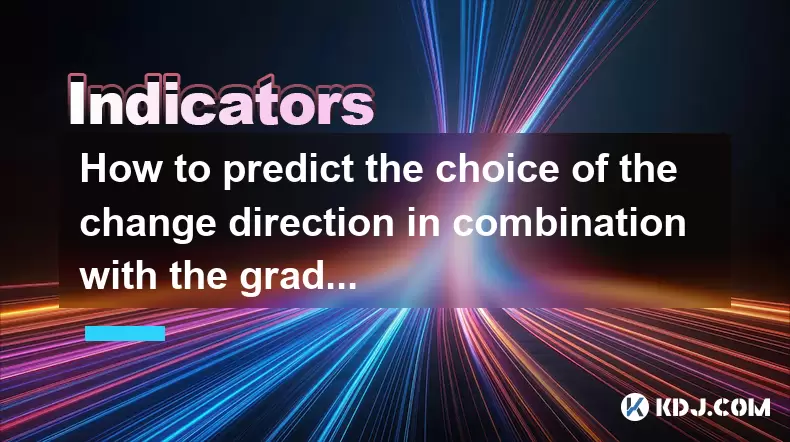
Introduction to K-line Analysis
In the world of cryptocurrency trading, the K-line, also known as the candlestick chart, is a fundamental tool used to analyze price movements and predict future trends. The K-line entity, which represents the price range between the opening and closing prices within a specific time frame, can provide valuable insights into market sentiment and potential price movements. Understanding how to predict the choice of the change direction in combination with the gradual shrinking characteristics of the K-line entity is crucial for traders looking to make informed decisions.
Basics of K-line Entity and Its Shrinking Characteristics
The K-line entity is the rectangular body of the candlestick, which can be either bullish (green or white) or bearish (red or black), depending on whether the closing price is higher or lower than the opening price. The gradual shrinking of the K-line entity refers to a series of candlesticks where the body size becomes progressively smaller over time. This phenomenon often indicates a consolidation phase in the market, where neither bulls nor bears have a clear dominance.
When observing the shrinking characteristics, traders should pay attention to the following:
- Decrease in volatility: Smaller K-line entities suggest that the market is experiencing lower volatility.
- Potential reversal signals: A series of shrinking K-line entities can precede a significant price movement in either direction.
- Market indecision: The shrinking entity reflects a period of market indecision, where traders are unsure of the next price direction.
Predicting Change Direction Based on Shrinking K-line Entities
To predict the choice of the change direction in combination with the gradual shrinking characteristics of the K-line entity, traders need to look for specific patterns and signals. Here are the key steps to follow:
- Identify the trend: Before focusing on the shrinking K-line entities, it's essential to determine the overall trend. Are prices generally moving upwards, downwards, or sideways?
- Observe the shrinking pattern: Look for a series of at least three to five consecutive candlesticks with progressively smaller bodies. This pattern suggests a potential change in market dynamics.
- Analyze the preceding and succeeding candlesticks: The candlesticks immediately before and after the shrinking sequence can provide clues about the impending direction. For instance, a strong bullish candlestick following the shrinking pattern may indicate an upcoming upward trend.
- Use additional technical indicators: Combining the shrinking K-line entity analysis with other technical indicators, such as moving averages, RSI (Relative Strength Index), or MACD (Moving Average Convergence Divergence), can enhance prediction accuracy.
Case Studies: Real-World Examples
To illustrate how to predict the choice of the change direction using the shrinking characteristics of the K-line entity, let's consider a few real-world examples from the cryptocurrency market.
- Example 1: Bitcoin (BTC): In a recent trading session, Bitcoin exhibited a series of shrinking K-line entities over a period of four hours. Following this pattern, a strong bullish candlestick emerged, leading to a significant price increase over the next few hours. Traders who recognized the shrinking pattern and anticipated the bullish reversal could have capitalized on this opportunity.
- Example 2: Ethereum (ETH): Ethereum's price chart showed a similar shrinking pattern over a daily timeframe. After several days of progressively smaller K-line entities, a bearish candlestick appeared, signaling a potential downtrend. Traders who identified this pattern and adjusted their positions accordingly could have mitigated losses or even profited from the downward movement.
Practical Tips for Implementing the Strategy
Implementing a strategy based on the shrinking characteristics of the K-line entity requires careful observation and analysis. Here are some practical tips to enhance your trading approach:
- Monitor multiple timeframes: Analyzing the shrinking pattern across different timeframes (e.g., 1-hour, 4-hour, daily) can provide a more comprehensive view of market dynamics.
- Set clear entry and exit points: Based on the predicted change direction, establish specific price levels for entering and exiting trades to manage risk effectively.
- Backtest your strategy: Before applying the strategy to live trading, backtest it using historical data to assess its effectiveness and refine your approach.
- Stay disciplined: Avoid making impulsive decisions based on short-term fluctuations. Stick to your analysis and trading plan to maximize the potential of the shrinking K-line entity strategy.
Combining with Other Technical Analysis Tools
While the shrinking K-line entity can be a powerful tool for predicting change direction, combining it with other technical analysis tools can enhance the accuracy of your predictions. Here are some complementary tools to consider:
- Moving Averages: Using moving averages can help confirm trends and identify potential reversal points. For instance, a shrinking K-line entity followed by a crossover of short-term and long-term moving averages can signal a strong trend change.
- Support and Resistance Levels: Identifying key support and resistance levels can provide additional context to the shrinking pattern. A break above resistance or below support after a series of shrinking K-line entities can confirm the predicted direction.
- Volume Analysis: Analyzing trading volume alongside the shrinking pattern can offer insights into the strength of the upcoming trend. A significant increase in volume following the shrinking sequence can validate the predicted direction.
Frequently Asked Questions
Q1: Can the shrinking K-line entity strategy be applied to all cryptocurrencies?
A1: Yes, the shrinking K-line entity strategy can be applied to all cryptocurrencies, as it is based on general principles of technical analysis. However, the effectiveness of the strategy may vary depending on the liquidity and volatility of the specific cryptocurrency.
Q2: How long should I wait for a confirmation after observing the shrinking pattern?
A2: The confirmation time can vary based on the timeframe you are analyzing. For shorter timeframes like 1-hour charts, you might see a confirmation within a few hours. For daily charts, it could take several days. It's essential to monitor the market closely and wait for a clear signal before making a trading decision.
Q3: Is the shrinking K-line entity strategy suitable for beginners?
A3: While the concept is straightforward, the shrinking K-line entity strategy requires a good understanding of market dynamics and technical analysis. Beginners should start by practicing with demo accounts and gradually applying the strategy in live trading as they gain more experience.
Q4: Can the shrinking K-line entity strategy be used in conjunction with fundamental analysis?
A4: Yes, combining the shrinking K-line entity strategy with fundamental analysis can provide a more holistic approach to trading. While technical analysis focuses on price patterns and market trends, fundamental analysis considers factors like project developments, market sentiment, and economic indicators. Integrating both can lead to more informed trading decisions.
Disclaimer:info@kdj.com
The information provided is not trading advice. kdj.com does not assume any responsibility for any investments made based on the information provided in this article. Cryptocurrencies are highly volatile and it is highly recommended that you invest with caution after thorough research!
If you believe that the content used on this website infringes your copyright, please contact us immediately (info@kdj.com) and we will delete it promptly.
- SHIB Price, Meme Coin Mania, and the 250x Potential Hunt
- 2025-08-09 16:30:13
- SOL, ETFs, and AI: Crypto's Triple Threat Sensation!
- 2025-08-09 17:10:12
- Tokenized Stock on Solana: SOL Price Reacts to Exodus's Bold Move
- 2025-08-09 17:10:12
- Meme Coins on Blockchains in 2025: Hype or the Future?
- 2025-08-09 16:50:11
- World Liberty Financial, Public Listing, and WLFI Tokens: A New York Minute on the Trump-Backed Crypto Venture
- 2025-08-09 16:50:11
- Holy Grail Coin Hunting: Rare Errors and Value Increases You Need to Know!
- 2025-08-09 16:30:13
Related knowledge

What does it mean when the Triple Moving Average (TRIX) turns downward but the price doesn't fall?
Aug 09,2025 at 12:42pm
Understanding the Triple Moving Average (TRIX) IndicatorThe Triple Moving Average, commonly known as TRIX, is a momentum oscillator designed to filter...

What does it mean when the Williams' oscillator repeatedly hits bottoms but fails to rebound?
Aug 09,2025 at 09:28am
Understanding the Williams %R OscillatorThe Williams %R oscillator, developed by Larry Williams, is a momentum indicator used in technical analysis to...
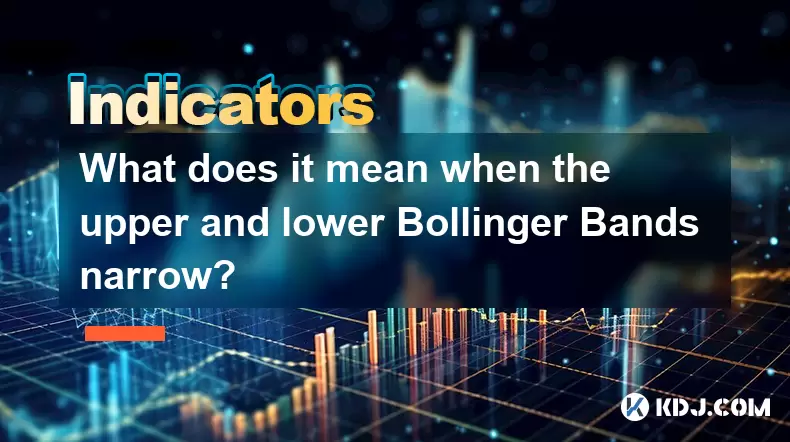
What does it mean when the upper and lower Bollinger Bands narrow?
Aug 09,2025 at 03:00pm
Understanding Bollinger Bands in Cryptocurrency TradingBollinger Bands are a widely used technical analysis tool in the cryptocurrency market, develop...
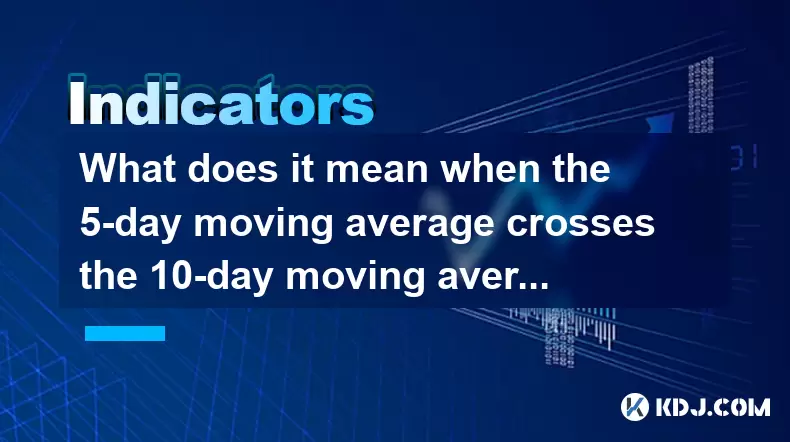
What does it mean when the 5-day moving average crosses the 10-day moving average but the 20-day moving average remains upward?
Aug 09,2025 at 03:35pm
Understanding Moving Averages in Cryptocurrency TradingMoving averages are foundational tools in technical analysis, especially within the cryptocurre...
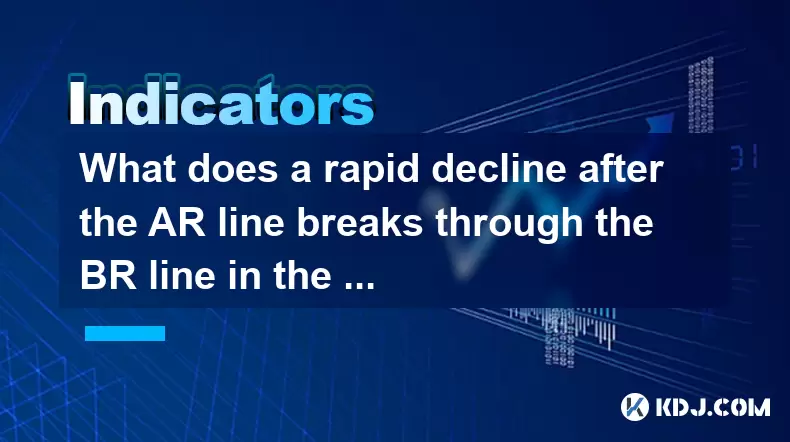
What does a rapid decline after the AR line breaks through the BR line in the ARBR indicator indicate?
Aug 09,2025 at 04:42pm
Understanding the ARBR Indicator ComponentsThe ARBR indicator is a technical analysis tool that combines two oscillators: the AR (Amplitude Ratio) and...
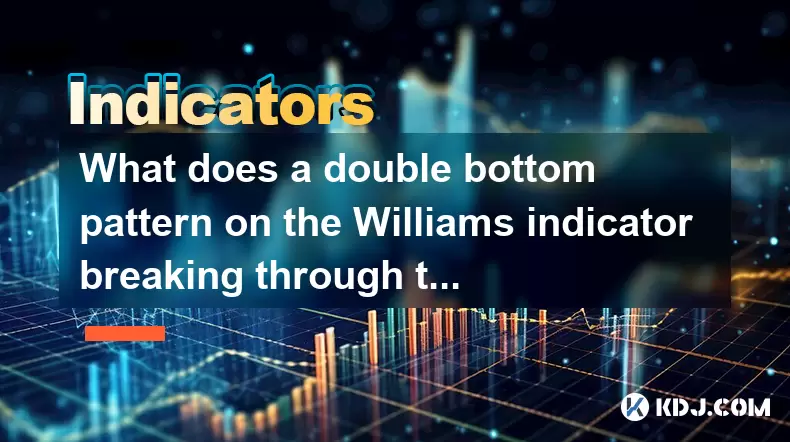
What does a double bottom pattern on the Williams indicator breaking through the 50-day midline indicate?
Aug 09,2025 at 10:56am
Understanding the Williams %R IndicatorThe Williams %R indicator, developed by Larry Williams, is a momentum oscillator that measures overbought and o...

What does it mean when the Triple Moving Average (TRIX) turns downward but the price doesn't fall?
Aug 09,2025 at 12:42pm
Understanding the Triple Moving Average (TRIX) IndicatorThe Triple Moving Average, commonly known as TRIX, is a momentum oscillator designed to filter...

What does it mean when the Williams' oscillator repeatedly hits bottoms but fails to rebound?
Aug 09,2025 at 09:28am
Understanding the Williams %R OscillatorThe Williams %R oscillator, developed by Larry Williams, is a momentum indicator used in technical analysis to...

What does it mean when the upper and lower Bollinger Bands narrow?
Aug 09,2025 at 03:00pm
Understanding Bollinger Bands in Cryptocurrency TradingBollinger Bands are a widely used technical analysis tool in the cryptocurrency market, develop...

What does it mean when the 5-day moving average crosses the 10-day moving average but the 20-day moving average remains upward?
Aug 09,2025 at 03:35pm
Understanding Moving Averages in Cryptocurrency TradingMoving averages are foundational tools in technical analysis, especially within the cryptocurre...

What does a rapid decline after the AR line breaks through the BR line in the ARBR indicator indicate?
Aug 09,2025 at 04:42pm
Understanding the ARBR Indicator ComponentsThe ARBR indicator is a technical analysis tool that combines two oscillators: the AR (Amplitude Ratio) and...

What does a double bottom pattern on the Williams indicator breaking through the 50-day midline indicate?
Aug 09,2025 at 10:56am
Understanding the Williams %R IndicatorThe Williams %R indicator, developed by Larry Williams, is a momentum oscillator that measures overbought and o...
See all articles

























































































